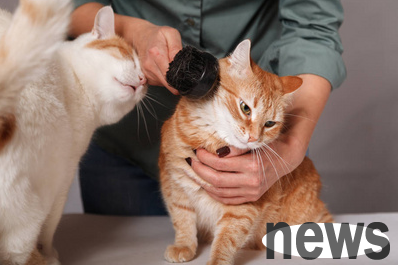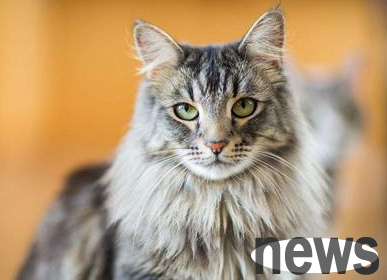In recent years, the development of the global pet cat care market has shown a positive growth trend. As people's demand and desire for pet partners increases, pet cats, as part of their family, have also received widespread attention and development in their care market.
In this article, Yuanzhihui Global Pet Industry Overseas Insights will combine the latest reports from major authoritative institutions to sort out the development prospects of cat care in the United States, Europe and some emerging markets.

01 European cats and per capita country with the largest number of cats
For many years, cats have been the favorite pets for Europeans. According to the Facts & Figures 2022 report released by the European Pet Food Association (FEDIAF), 26% of European households have 127 million cats in 2022.
The ranking of European pet cats does not reflect the prevalence of pet ownership. Countries with a larger population will naturally have more pets, but their per capita number of pets may not be the largest. Sorting European countries by the number of pets per capita will lead to different situations. Data reported by FEDIAF shows that among all European countries, the number of Russian pet cats in 2022 ranked first in Europe, with a height of 23.15 million; followed by Germany and France, with 15.2 million and 14.9 million respectively.
However, this vast country does not rank among the top ten in terms of per capita cat ownership. Instead, Hungary jumped to the top.
To determine the per capita cat ownership, the pet ownership data reported by FEDIAF is divided by the population in 2022 according to statistics using UN data. The top 10 countries with per capita cat ownership are shown in the following table: Driven by the increase in pet population, according to data reported by FEDIAF ↓
In 2022, the size of the European pet food market increased to 29.1 billion euros (about US$31.1 billion); the average annual growth rate in the past three years was 5.1%;
owns 150 pet food companies, which operate about 200 factories.
To achieve these sales figures, European pet owners purchased 10.5 million tons of pet food, with an annual growth rate of 3.5%.

02 The number of kittens in the United States is increasing
Although dogs are still the most popular pet in the United States, the number of cats has been increasing. Trend data from MRI-Simmons shows that the number of households with puppies under one year old has dropped from about 5.6 million in 2014 to about 4.4 million in 2023.
In contrast, the number of families with kittens increased from about 3.1 million to about 3.9 million during this period.
Due to these opposite trends, the proportion of kitten families to puppy families has surged from 54% to 89% over the past 10 years.
From another data perspective, 12% of cat owners currently have a kitten, while less than 9% of dog owners have a puppy.
As we all know, cats require less space and maintenance than dogs, because of their convenience and the high urbanization in Europe and the United States have prompted more local people to choose to raise cats. As urbanization becomes the norm on a global scale, other regions have also begun to set off a cat craze, and cats are becoming more and more popular.
In addition to the mature European and American markets in the pet industry, with the continuous increase in the number of cats in other regions, some emerging cities have begun to show their strengths.
Yuanzhihui Global Pet Industry Going Overseas Insights learned that a report released by MarketsandMarkets recently revealed the development of five major cat care emerging markets, including China, Brazil, Mexico, Brazil and India.
03 Top 5 cat care emerging markets are emerging
China: Among these five countries, China's cat care industry is in a leading position. MarketsandMarkets analysts predict revenues of approximately US$5.8 billion in 2022;
is expected to reach US$13.39 billion by 2027. Brazil: The cat care market ranks second. The market value in 2022 is US$884.4 million; this data is expected to increase to US$1.107.3 billion by 2027.
Mexico: The cat care market ranks third↓
The market value in 2022 is US$545.7 million;
is expected to grow to US$680.5 million by 2027.
South Africa: Especially in urban areas, there are increasing number of people raising pets, coupled with the increase in disposable income and the growth of the middle class. The market shows the following trend ↓
The demand for high-quality cat food products and accessories is also increasing; expenditure on cat food, snacks and other products is also increasing.
India: Against the backdrop of the rise of the middle class and the accelerated urbanization process ↓
The number of people raising cats in this market continues to increase. In the report, analysts from MarketsandMarkets also pointed out that in 2022, these five markets contributed US$7.43 billion to the global cat care industry; from 2007 to 2011, the compound annual growth rate (CAGR) of China, Brazil, Mexico, Brazil and India reached about 20.7%; from 2027, the total value of these markets will reach US$15.42 billion; from 2022 to 2027, the compound annual growth rate may reach 15.7%.
To sum up, the development of pet cat care market in major countries and regions around the world is generally improving. For pet-related companies, expanding the cat care market is a potential business opportunity.
But at the same time, some risks and challenges that may arise need to be paid attention to and resolved. On this basis, we will better promote the innovation and development of cat care products and services.
